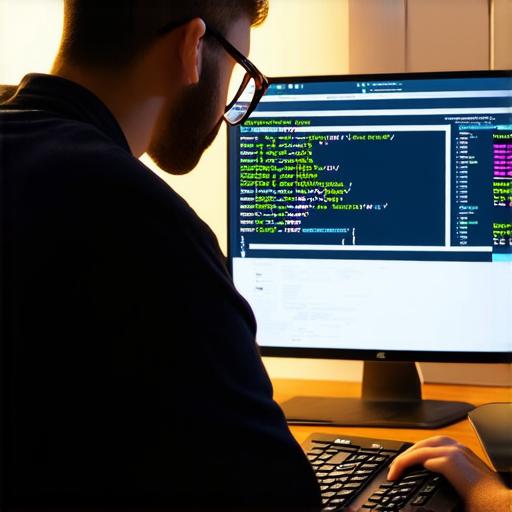Python is a popular programming language known for its simplicity, readability, and ease of use. It is an excellent choice for beginners who want to learn how to program. In this article, we will guide you through the process of learning how to program in Python, from the basics to advanced concepts.
Why Choose Python?
Python is a versatile programming language that has gained popularity among software developers worldwide. It has a simple syntax, making it easy to read and write for beginners. Additionally, Python has a large community of users, which means there are plenty of resources available online if you need help with anything. Furthermore, Python is widely used in various industries such as data science, machine learning, artificial intelligence, and web development, making it a valuable skill to have in your portfolio.
Getting Started: Installing Python and Setting up Your Development Environment
Before you can start programming in Python, you need to install the language on your computer. You can download the latest version of Python from the official website (https://www.python.org/downloads/). Once you have installed Python, you will also need to set up your development environment. This includes setting up a text editor or an Integrated Development Environment (IDE) such as Visual Studio Code or PyCharm. These tools will help you write, debug, and run your code more efficiently.
The Basics: Data Types, Operators, and Control Flow

In Python, there are several data types that you can use to store and manipulate information. The most common data types are integers, floating-point numbers, strings, lists, tuples, and dictionaries. You can also create objects of specific classes such as the built-in class `str` for working with strings or the `datetime` class for working with dates and times.
Python also has a set of operators that you can use to perform various operations on your data. These include arithmetic operators such as +, -, *, /, %, , and //, comparison operators such as , !, >, , and >, and <<.
Control flow is an important concept in programming, and Python provides several control flow statements that you can use to execute code based on certain conditions. These include `if` and `elif` statements for executing code if a condition is true or false, `for` loops for iterating over a sequence of items, and `while` loops for repeatedly executing code as long as a condition is true.
Functional Programming in Python
One of the key features of Python is its support for functional programming. Functional programming is a programming paradigm that emphasizes the use of functions to write programs that are modular, reusable, and easy to test. In Python, you can define functions using the `def` keyword followed by the function name and arguments in parentheses. Functions can return values using the `return` statement, and they can also take input parameters using the `input()` function.
Python also has several built-in functions that are commonly used in functional programming, such as `map()`, `filter()`, `reduce()`, and `sorted()`. These functions allow you to perform common operations on lists and other iterable objects, such as filtering out elements, mapping values, reducing a collection of values to a single value, and sorting items.
Object-Oriented Programming in Python
Python also supports object-oriented programming (OOP), which is a programming paradigm that uses objects and classes to organize code and encapsulate data and behavior. In Python, you can define classes using the `class` keyword followed by the class name and an indented block of code defining the class methods and attributes.
